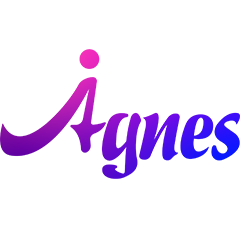Product Introduction
- Agnes AI is a conversational AI agent designed to facilitate collaborative content creation and strategic planning through advanced team coordination tools. It integrates natural language processing with real-time collaboration features to enable seamless teamwork across documents, presentations, and strategy frameworks. The platform supports simultaneous input from multiple users while maintaining contextual coherence across all interactions.
- The core value of Agnes AI lies in its ability to unify team workflows by eliminating siloed work processes and ensuring consistent knowledge retention. It optimizes productivity by reducing redundant tasks and enabling instant synchronization of ideas, making it ideal for fast-paced environments requiring coordinated output.
Main Features
- Real-Time Co-Editing: Agnes AI allows multiple users to edit documents, slides, or reports simultaneously, with changes reflected instantly across all devices. The system employs conflict-resolution algorithms to merge inputs without data loss and includes version control for tracking contributions.
- Shared Memory System: The AI retains context from previous interactions, ensuring continuity in team discussions and document iterations. This feature uses a centralized knowledge repository that updates dynamically, allowing users to reference prior decisions or data points during collaborative sessions.
- Team Workflow Automation: Agnes AI automates task assignments, progress tracking, and deadline reminders based on project requirements. It integrates with third-party tools like Slack, Trello, and Google Workspace to streamline cross-platform workflows and minimize manual coordination.
Problems Solved
- Fragmented Collaboration: Traditional tools often require teams to switch between disjointed platforms for communication, editing, and task management, leading to inefficiencies. Agnes AI consolidates these functions into a single interface with synchronized updates.
- Target User Groups: The product serves remote teams, enterprise departments, and cross-functional project groups that require real-time alignment on complex deliverables. It is particularly valuable for industries like consulting, marketing, and software development.
- Typical Use Cases: Teams use Agnes AI to co-author client reports, design pitch decks under tight deadlines, or refine product roadmaps with input from stakeholders in different time zones. Scenario-specific templates accelerate onboarding for new projects.
Unique Advantages
- Integrated Collaboration Layer: Unlike standalone AI writing assistants or project management tools, Agnes AI combines conversational AI with document editing and workflow automation in a unified environment. This eliminates the need for disjointed tool stacks.
- Context-Aware Memory: The shared memory system goes beyond basic version history by preserving decision-making rationale, stakeholder feedback, and iterative changes in a searchable format. This reduces redundant discussions during long-term projects.
- Competitive Edge: Agnes AI outperforms alternatives by offering granular permission controls, enterprise-grade encryption, and compatibility with 50+ file formats, including PowerPoint, Excel, and Markdown. Its AI adapts to organizational jargon and industry-specific terminology over time.
Frequently Asked Questions (FAQ)
- How does Agnes AI ensure data security during collaborative sessions? All data is encrypted in transit (TLS 1.3) and at rest (AES-256), with optional on-premises deployment for enterprises. User access is governed by role-based permissions and multi-factor authentication.
- Can Agnes AI integrate with our existing project management software? Yes, the platform supports API-based integrations with Jira, Asana, Microsoft Teams, and other tools, allowing bidirectional synchronization of tasks, deadlines, and notifications.
- What file types does Agnes AI support for co-editing? The platform natively supports .docx, .pptx, .xlsx, .pdf, .md, and .txt files, with real-time rendering for complex formatting elements like charts, animations, and conditional formatting.
- How does the shared memory system handle outdated information? The AI automatically archives deprecated data while maintaining version-linked references, ensuring teams always access current context without losing historical audit trails.
- Is offline functionality available? Users can draft content offline, with changes syncing to the cloud once connectivity is restored. Collaborative features require an active internet connection to maintain real-time coordination.
